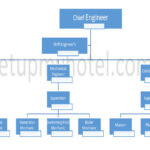Standards of cleaning for the Hotel Housekeeping Department
To maintain the standards that keep guests coming back, the hotel housekeeping department or the room attendants should follow a series of detailed procedures and cleaning practices.
A Systematic approach can save energy, time, and money and also increase the guest satisfaction level. The hotel’s room cleaning procedure should not only the quality of service to the guest but also ensure efficiency and satisfaction for the housekeeping staff who is performing such tasks.
The sequence of room cleaning should always consist of 1) Preparation, 2) Actual Cleaning, and 3) Final Check. The housekeeping floor supervisors should perform a detailed final check before releasing the rooms for arrivals because this is an integral part of the guest room cleaning.
Depending on the purpose of the area & surfaces to be cleaned, various standards of cleaning may be imposed. Once a standard has been established, there should be strict adherence to the cleaning methods required, & efficient training & supervision are called for.
The different standards of cleaning for different surfaces and areas are as follows:
Physically clean:
when the standard is set, the area or surface is supposed to be free from apparent dust & dirt, as when wiped by hand.
Chemically clean:
This standard means that the area should be free from harmful chemicals on the surfaces & in the surrounding air.
Bacteriologically clean:
To meet this standard, the surfaces should be cleaned to be free from any harmful bacteria that may cause disease or infection. This is referred to as a ‘clinical standard’ as most hospitals follow this standard for their general wards.
Entomologically clean:
This means that the area should be free from harmful insects or pests.
Osmologically clean:
This cleaning standard demands that the surfaces & areas should be free from any organic or inorganic matter that may emit an odor.
Terminally clean:
This refers to the standard of cleaning usually in operation theatres & intensive care units in hospitals, where surfaces need to be constantly sanitized against all kinds of pathogenic microbes.
Regular Cleaning of GuestDefinition of Guest in Hospitality Industry: A guest is the most important person in any business. A... Rooms Vs Deep Cleaning?
The Room attendants should always keep in mind that the cleaning of a guest room begins the moment the room attendant approaches the guest room door. They should always respect the privacy of the guest and follow the standard operation procedure for knocking and entering the guest room.
As mentioned at the beginning of this article the final check is the most critical step in guest room cleaning, This makes the difference between just cleaning the room and delivering a professional job. Using a guestroom inspection checklist ensures that the desired results or standards of the hotel are consistently achieved.
Another advantage of inspecting the room is to find any problems that may have been overlooked during the room cleaning well before the guest notices it and raises a complaint or dissatisfaction.











